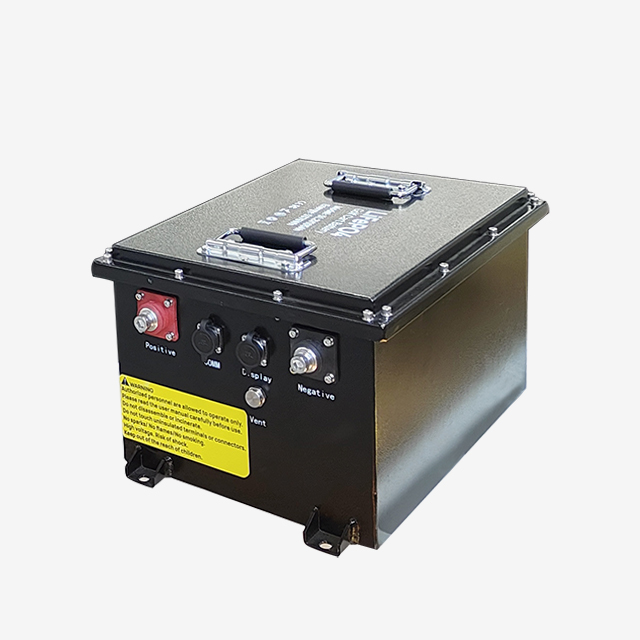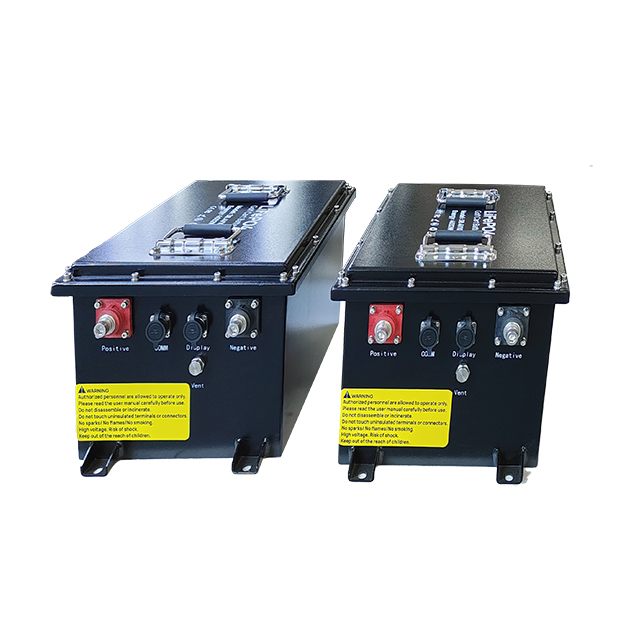
Golf carts have long been powered by lead-acid batteries, but with advancements in technology, golf cart lithium batteries are becoming increasingly popular. These batteries offer several advantages, such as increased efficiency, longer lifespan, and faster charging times, making them the perfect choice for golf cart owners looking to upgrade their power system. In this article, we will delve into the structure of golf cart lithium batteries, how they work, and why they are superior to traditional lead-acid batteries. We will also explore the importance of lithium traction batteries in golf carts and how they contribute to the overall performance.
Understanding the Structure of Golf Cart Lithium Batteries
Golf cart lithium batteries are essentially advanced power storage systems made up of several components that work together to provide efficient and reliable power to golf carts. These batteries are designed to deliver high power output and have a long operational lifespan, making them ideal for daily use in golf carts.
The main components of a golf cart lithium battery are:
1. Lithium-Ion Cells
At the heart of any golf cart lithium battery are the lithium-ion cells. These cells are responsible for storing electrical energy and releasing it as needed. Lithium-ion cells are preferred in golf cart lithium batteries because they offer high energy density, which allows for a more compact design while storing a large amount of energy. This means the battery is lighter, smaller, and more efficient compared to traditional lead-acid batteries.
Lithium-ion cells consist of several layers, including:
Anode (typically made from graphite)
Cathode (usually made from lithium metal oxide)
Electrolyte (which allows the movement of ions)
Separator (a barrier that keeps the anode and cathode apart to prevent short-circuiting)
These components work together to allow lithium-ion cells to store and release energy efficiently. The number and arrangement of the cells within the battery determine the overall voltage and capacity of the golf cart lithium battery.
2. Battery Management System (BMS)
A crucial part of the golf cart lithium battery is the Battery Management System (BMS). The BMS is a smart system that monitors and controls the battery's performance to ensure optimal functionality and safety. The main functions of the BMS include:
Voltage Monitoring: The BMS ensures that each cell within the battery is charged and discharged evenly, preventing overcharging or deep discharging, which could damage the battery.
Temperature Control: The BMS monitors the temperature of the battery and ensures it stays within safe operating limits to prevent overheating or degradation.
Cell Balancing: In a multi-cell configuration, the BMS ensures that all cells remain balanced, preventing any one cell from becoming too weak or too strong, which could lead to failure.
Overcurrent Protection: The BMS also protects the battery from excessive current, which could cause damage to the internal components or lead to unsafe conditions.
The BMS is essential in maintaining the long-term health of the golf cart lithium battery, ensuring that it performs optimally for many years.
3. Cooling System
Although lithium-ion batteries generate less heat than lead-acid batteries, a cooling system is still often used to maintain optimal performance, particularly during heavy use. A cooling system may consist of a fan, heat sink, or liquid cooling system that helps dissipate heat generated during charging or discharging. Maintaining a cool temperature is crucial to extending the lifespan of the golf cart lithium battery and preventing thermal degradation.
4. Battery Enclosure
The battery enclosure is the outer casing that houses all the internal components of the golf cart lithium battery. This casing is typically made of durable materials like aluminum or high-quality plastic that are designed to protect the battery from physical damage due to impacts, vibrations, and environmental factors. The enclosure also helps to keep moisture, dust, and dirt from getting inside the battery, which could cause damage or reduce performance.
The battery enclosure is an important part of the design because it ensures that the golf cart lithium battery operates safely and efficiently in various environments, including outdoor conditions.

How Lithium Batteries for Golf Carts Differ from Lead-Acid Batteries
While both golf cart lithium batteries and lead-acid batteries are used to power golf carts, they have significant differences in terms of structure, performance, and lifespan. Here's a comparison between the two:
| Feature | Golf Cart Lithium Battery | Lead-Acid Battery |
| Energy Density | High (more energy in a smaller package) | Low (bulkier for the same energy output) |
| Weight | Lightweight and compact | Heavy and bulky |
| Lifespan | 3,000–5,000 charge cycles | 500–1,000 charge cycles |
| Charging Time | Fast (3-5 hours) | Slow (8-12 hours) |
| Maintenance | Low maintenance (no water refills) | Regular maintenance required (water refills) |
| Efficiency | Higher efficiency, less energy loss | Lower efficiency, more energy loss |
| Cost | Higher upfront cost, but long-term savings | Lower initial cost, higher long-term maintenance |
As shown in the table, golf cart lithium batteries provide a higher energy density, a longer lifespan, and faster charging times compared to traditional lead-acid batteries. These factors make lithium batteries a more cost-effective option over time, even though the initial investment may be higher.
Why Use a Lithium Traction Battery in a Golf Cart?
Lithium traction batteries are designed specifically for electric vehicles like golf carts. They are built to provide a high power output over an extended period, making them the ideal choice for golf cart lithium batteries. These batteries have several important features that contribute to the improved performance of a golf cart:
1. High Power Density
Lithium traction batteries deliver high power output, which is crucial for golf carts that need to move efficiently over varying terrains. Whether you are driving on flat golf courses or inclines, a lithium traction battery ensures consistent power and a smooth driving experience.
2. Longer Range
Since lithium traction batteries have a higher energy density, they are capable of storing more energy in a smaller space, resulting in a longer driving range for the golf cart. This is a significant advantage over lead-acid batteries, which tend to lose power more quickly as they discharge.
3. Faster Charging
Lithium traction batteries can be charged more quickly than lead-acid batteries, allowing golfers to get back on the course faster. The typical charging time for a golf cart lithium battery is between 3 and 5 hours, whereas lead-acid batteries can take up to 12 hours to fully charge.
4. Lightweight Design
The lightweight nature of golf cart lithium batteries makes them an attractive option for golf cart owners who want to improve the performance of their carts. A lighter battery means less weight for the cart, which can improve acceleration, speed, and overall handling. It also helps extend the lifespan of the golf cart by reducing strain on the motor and other components.
5. Longer Lifespan
Golf cart lithium batteries, particularly lithium traction batteries, are designed to withstand many more charge and discharge cycles than lead-acid batteries. With proper care, these batteries can last for up to 5,000 cycles, while lead-acid batteries typically only last around 500 to 1,000 cycles.
SUZHOU FOBERRIA NEW ENERGY TECHNOLOGY CO., LTD: Your Source for High-Performance Lithium Batteries
If you're looking to upgrade your golf cart with a high-performance lithium battery, SUZHOU FOBERRIA NEW ENERGY TECHNOLOGY CO., LTD offers a range of superior golf cart lithium batteries. These batteries are lightweight, durable, and designed for fast charging, ensuring your golf cart is always ready for the next round. Featuring advanced technology, FOBERRIA's lithium batteries provide higher energy density and longer lifespan compared to traditional lead-acid batteries.
Whether you're using your golf cart for casual use or competitive play, FOBERRIA's lithium batteries deliver reliable power, giving you the performance you need to enjoy your golfing experience to the fullest.













